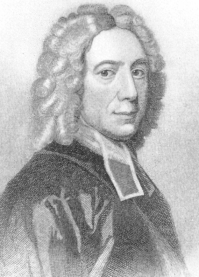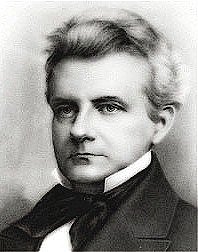 Two brilliant song writers, separated by almost a century of time and half a world apart, created of one of the most recognizable ‘Christmas hymns’ ever sung. Issac Watts and Lowell Mason were musical icons who blazed new trails for spiritual renewal. Their work has touched the hearts of God-fearing men, women and children for generations. Yet as they penned the words and drafted the scales of this classic favorite, they never realized how much they were blessing the world with this cherished ‘Christmas anthem.’
Two brilliant song writers, separated by almost a century of time and half a world apart, created of one of the most recognizable ‘Christmas hymns’ ever sung. Issac Watts and Lowell Mason were musical icons who blazed new trails for spiritual renewal. Their work has touched the hearts of God-fearing men, women and children for generations. Yet as they penned the words and drafted the scales of this classic favorite, they never realized how much they were blessing the world with this cherished ‘Christmas anthem.’
 Psalm 98 provides the message that Issac Watts needed for the hymn we know as ‘Joy to the World.’ Reading the words penned by the Psalmist in verses 4, 7 & 8 we see the inspiration; “Shout for joy to the Lord, all the earth, burst into jubilant song…let the sea resound…the world, and all who live in it…let the mountains sing together for joy; let them sing before the Lord…” The strength of this song comes was we consider the words of the angel in Luke chapter 2, “…I bring you great joy which will be for all people; for today in the city of David there has been born for you a Savior, who is Christ the Lord…’ (Additionally, this work from Issac Watts was set in common meter, and ‘Joy to the World’ was originally sung to the tune of ‘Come Thou Fount of Every Blessing.’
Psalm 98 provides the message that Issac Watts needed for the hymn we know as ‘Joy to the World.’ Reading the words penned by the Psalmist in verses 4, 7 & 8 we see the inspiration; “Shout for joy to the Lord, all the earth, burst into jubilant song…let the sea resound…the world, and all who live in it…let the mountains sing together for joy; let them sing before the Lord…” The strength of this song comes was we consider the words of the angel in Luke chapter 2, “…I bring you great joy which will be for all people; for today in the city of David there has been born for you a Savior, who is Christ the Lord…’ (Additionally, this work from Issac Watts was set in common meter, and ‘Joy to the World’ was originally sung to the tune of ‘Come Thou Fount of Every Blessing.’
Born in 1792, Lowell Mason grew up in the early years of American history. A native of New Jersey, he was raised with a love for spiritual hymns. His ability to compose music for worship was highlighted in the early 1800’s as he taught Sunday school in Georgia. His musical popularity escalated in the late 1820’s when 50,000 copies of his self-published song book were ordered by Handel & Haydn Society of Massachusetts. But one of his great accomplishments came in 1836 when Mason composed a new melody inspired by Handel’s Messiah. The completed melody was an exuberant ode called ‘Antioch.’ It’s name inspired by the Syrian city were followers of Christ were first called ‘Christians.’ But this new master piece lacked the proper message to fit the melody…until he found Watt’s ‘Joy to the World.’
As December continues to roll along we’ll continue to explore and learn more about some of the songs of the season. This “Christmas Song of the Day”…Joy to the World.
Joy to the world! The Lord is come let earth receive her King!
Let every heart prepare Him room and heaven and nature sing
And heaven and nature sing and heaven, and heaven and nature sing
Joy to the world! the Savior reigns let men their songs employ
While fields and floods rocks, hills and plains repeat the sounding joy
Repeat the sounding joy repeat, repeat the sounding joy
No more let sin and sorrow grow nor thorns infest the ground
He comes to make His blessings flow far as the curse is found
Far as the curse is found far as, far as the curse is found
He rules the world with truth and grace and makes the nations prove
The glories of His righteousness and wonders of his love
And wonders of his love and wonders and wonders of his love




